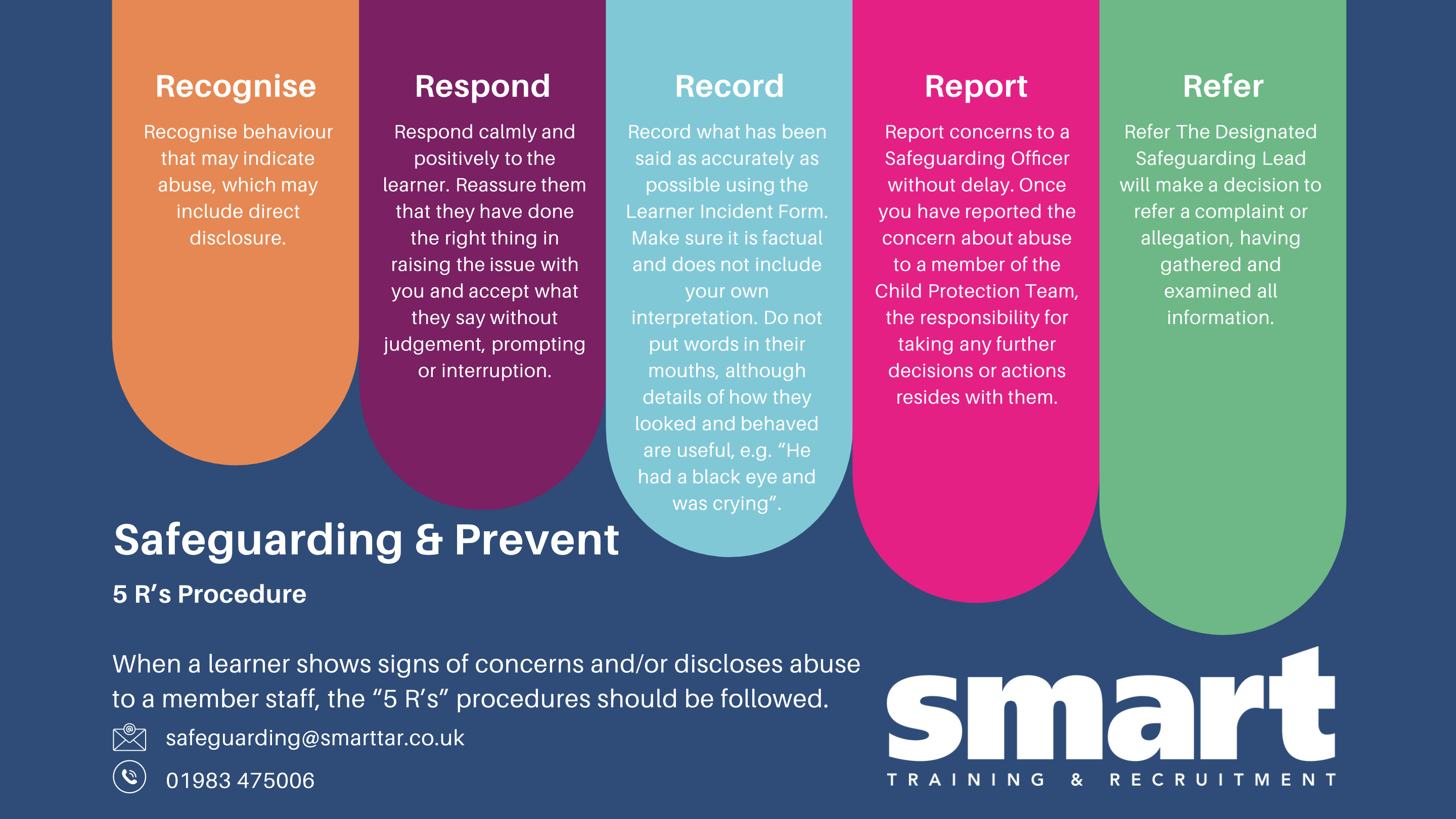BUSINESS
Safeguarding Mobilef: Best Practices and Challenges

Mobile applications are the backbone of the
z. With over 6 billion smartphone users globally, mobile apps have become indispensable tools for everything from shopping and banking to entertainment and business operations. But with this ubiquity comes a pressing need for robust security. Cybercriminals are more innovative than ever, exploiting every vulnerability they can find. To protect apps and users from increasingly sophisticated threats, mobile app developers must adopt a proactive—and comprehensive—approach to security.
This post explores the best practices for safeguarding mobile applications while addressing the challenges developers face. By the end, you’ll understand the key strategies needed to create secure, resilient apps that earn user trust.
Why Mobile App Security Matters
Mobile app security is crucial not just for protecting users but also for maintaining your brand’s reputation. Security breaches can lead to severe consequences, including stolen user data, financial losses, and a dramatic loss of trust. According to a study by IBM Security, 42% of organizations experienced at least one mobile-related security incident in the past year—and the costs can be staggering.
What makes mobile apps particularly vulnerable?
- Widespread Use: With billions of users accessing apps, cybercriminals have no shortage of potential victims.
- Varied Platforms: Apps developed for different operating systems (iOS, Android, etc.) face unique vulnerabilities, increasing the threat landscape.
- Device Diversity: Different devices vary in their security features, and apps must perform consistently across all of them.
- Open Networks: Users often access apps via public Wi-Fi, exposing them to man-in-the-middle attacks.
Addressing these concerns requires adhering to best practices and anticipating potential challenges.
Best Practices for Mobile App Security
1. Adopt Secure App Development Frameworks
Building a secure app starts with the right development framework. From the ground up, developers should integrate secure coding practices, avoiding common vulnerabilities like SQL injection or insecure data storage.
- Minimize Permissions: Only request permissions that your app absolutely needs to function.
- Validate Inputs: Any input entered by users should be meticulously validated to prevent injection attacks.
- Code Obfuscation: Make your app code difficult to reverse-engineer. Tools like ProGuard (for Android) and R8 can obscure code without affecting performance.
2. Encrypt Data
Data encryption is essential to protect sensitive user information like passwords, credit card numbers, and personal identifiers. Ensure that all data, whether in transit or at rest, is encrypted.
- SSL/TLS Protocols protect data transferred between app servers.
- Use AES (Advanced Encryption Standard) for encrypting data stored on devices.
- Avoid storing sensitive data locally unless absolutely necessary.
3. Implement Multi-Factor Authentication (MFA)
Single-password systems are no longer sufficient. Incorporating MFA adds an additional layer of security by requiring users to verify their identity through methods like SMS codes, biometrics (fingerprint or facial recognition), or authenticator apps.
This not only protects accounts but also provides peace of mind to users wary of impersonation attempts.
4. Regularly Update & Patch Vulnerabilities
Applications that are not regularly updated leave the door open to exploitation. Cybercriminals are quick to target known vulnerabilities. That’s why it’s critical to monitor and patch your app often.
- Keep your app code up to date with the latest security fixes.
- Educate users on the importance of installing updates by notifying them via push messages.
- Monitor third-party libraries for potential vulnerabilities—they account for nearly 80% of some apps’ codebases.
5. Conduct Regular Security Testing
Testing isn’t just a step in the development process—it’s a continuous requirement. Regularly test your app for weak spots and functionality issues through methods like penetration testing and code reviews.
- Dynamic Application Security Testing (DAST) simulates attacks on the app in real-world scenarios.
- Static Analysis Tools analyze the code without executing it, identifying hardcoded passwords or potentially unsafe functions.
6. Educate Your Users
While robust app security mechanisms are fundamental, user awareness also plays a substantial role in security.
- Teach Safe Practices like recognizing phishing attempts or setting strong passwords.
- Warn against downloading the app from unverified sources.
- Design a user-friendly interface that fosters secure behaviors (e.g., a clear and simple password reset function).
Challenges in Mobile App Security
Even with best practices in place, developers face numerous challenges when safeguarding mobile apps. Here’s how to anticipate and mitigate these hurdles.
1. Platform Fragmentation
Developing secure apps for multiple operating systems and devices can be incredibly tricky. Android, for instance, faces fragmentation due to numerous OS versions and hardware variations. Ensuring consistency across all platforms requires significant effort and testing.
Solution: Leverage cross-platform development tools like Flutter or React Native that come with built-in security features.
2. Balancing Security and User Experience
Users expect apps to load quickly, look great, and function seamlessly—but sometimes, adding layers of security can slow things down. Striking a balance between security and usability is a persistent challenge.
Solution: Implement user-friendly security measures like biometric login and focus on performance-optimized encryption techniques.
3. Evolving Cyberthreats
Cybercriminals are constantly developing new methods to exploit vulnerabilities. From zero-day attacks to malware injections, staying one step ahead can feel like an uphill battle.
Solution: Stay informed. Subscribe to security bulletins and maintain memberships in communities that share real-time threat intelligence, such as OWASP or the Cloud Security Alliance.
4. Limited Resources
For small businesses or indie developers, implementing robust mobile app security may feel out of reach due to financial or resource constraints.
Solution: Prioritize. Start with the most critical security measures and utilize resources like open-source security libraries to reduce costs.
Fostering a Secure Mobile App Ecosystem
Mobile app security isn’t just about technical solutions—it’s about building trust and ensuring user satisfaction. By following best practices and anticipating challenges, developers can create resilient apps that not only protect data but also foster loyalty among users.
Remember, for app security to work effectively, it must be prioritized as an ongoing effort rather than something addressed once.
If safeguarding your app seems daunting, start small. Focus on encryption, vulnerability testing, and educating your users. With mobile apps becoming an integral part of our lives, security isn’t just a technical obligation—it’s a responsibility.
BUSINESS
Navigating the Digital Frontier: How Businesses in Zanzibar Can Thrive Online

Welcome to the digital age, where a world of opportunities lies just a click away. For businesses in Zanzibar, this era offers an unprecedented chance to expand their reach and connect with customers beyond the beautiful shores of the island. As more consumers turn to online platforms for shopping and engagement, understanding how to navigate this digital frontier is crucial for success.
Imagine harnessing the power of technology to showcase your unique products or services while attracting tourists from around the globe. Whether you’re a local artisan selling handcrafted goods or a hospitality business looking to attract visitors, going digital can transform your operations and elevate your brand presence. Let’s explore how businesses in Zanzibar can thrive online amid challenges while embracing innovative tools that make their journeys smoother and more rewarding!
The Current State of Online Business in Zanzibar
Zanzibar’s online business landscape is evolving, yet it remains in its infancy. Many local entrepreneurs are just beginning to explore the digital space. Traditional markets still dominate, but a noticeable shift is underway.
The rise of smartphones has opened new doors for small businesses. Many have started using social media platforms to reach broader audiences beyond their immediate neighborhoods. However, challenges like inconsistent internet connectivity hinder progress.
E-commerce is slowly gaining traction as well. More Zanzibari artisans and vendors are setting up online shops to showcase unique products such as spices and crafts. The potential for growth is immense.
Yet, there remains a disparity in understanding digital tools among various sectors. Some businesses struggle with branding and marketing strategies that could elevate their visibility online. This highlights the need for education on digital best practices within the community.
Why Going Digital Is Essential for Businesses in Zanzibar
Embracing the digital landscape is no longer optional for businesses in Zanzibar. The world is moving online, and so must local enterprises to stay competitive.
Digital platforms offer unprecedented reach. Businesses can connect with a global audience, showcasing their unique products and services beyond local borders. This exposure opens doors to new markets and opportunities.
Moreover, going digital enhances efficiency. Automated processes simplify operations, reducing costs while improving service delivery. Customers appreciate quick responses and seamless transactions.
The COVID-19 pandemic has highlighted the importance of adaptability. Those who pivoted to online models not only survived but thrived during challenging times.
Establishing an online presence builds credibility. A well-designed website or active social media profiles instill trust among potential customers eager to engage with brands that reflect professionalism and reliability.
Overcoming Challenges: Internet Access and Infrastructure
Zanzibar’s beauty attracts many, but digital connectivity remains a challenge. Many areas still struggle with limited internet access. This hinders businesses from reaching their full potential online.
Improving infrastructure is crucial for the island’s economic growth. Investment in modern telecommunications can bridge the gap between local entrepreneurs and global markets. Enhanced connectivity opens doors to new opportunities.
Collaboration among government, private sector, and communities can drive change. Local initiatives aimed at boosting internet availability are essential for empowering small businesses.
Promoting tech-savvy solutions like community Wi-Fi hotspots may also help improve accessibility. By addressing these barriers head-on, Zanzibar can create an environment where online commerce thrives and innovation flourishes across all sectors of the economy.
Leveraging Social Media for Marketing and Networking
Social media is a powerful tool for businesses in Zanzibar. It offers an unparalleled platform to connect with customers and build brand awareness.
Engaging content can showcase local culture, products, and services while resonating with the audience. Creative posts that highlight unique aspects of Zanzibar will capture attention quickly.
Networking opportunities abound on platforms like Facebook, Instagram, and Twitter. Businesses can join groups relevant to their niche or collaborate with influencers who share similar values.
Timely responses to comments and messages enhance customer relationships. Transparency fosters trust among potential clients.
Running targeted ads allows companies to reach specific demographics within the region or beyond. This precision leads to better conversion rates.
Utilizing analytics tools offers insights into what works best. Understanding audience behavior enables businesses to refine their strategies effectively as they grow online presence in Zanzibar’s vibrant market landscape.
Utilizing E-commerce Platforms for Selling Products and Services
E-commerce platforms are game changers for businesses in Zanzibar. They offer a global marketplace, allowing local entrepreneurs to showcase their products and services beyond the island.
Setting up an online store is now more accessible than ever. With various user-friendly options like Shopify, WooCommerce, or Etsy, even those with limited tech skills can create beautiful storefronts.
These platforms also provide essential tools for managing inventory and processing payments securely. This streamlines operations and enhances customer trust.
Marketing through e-commerce is equally vital. Businesses can utilize SEO strategies to attract more visitors and use analytics to understand buyer behavior better.
Moreover, e-commerce enables round-the-clock sales opportunities. Customers can browse and shop at their convenience, leading to increased revenue potential for Zanzibari businesses eager to grow in the digital age.
The Importance of a User-Friendly Website
A user-friendly website is crucial for businesses in Zanzibar to capture and retain customers. First impressions matter, and a well-designed site creates trust and credibility.
Navigation should be seamless. Visitors want to find information quickly without feeling lost. An intuitive layout encourages exploration, leading to increased engagement.
Loading speed also plays a vital role. Slow websites frustrate users, making them more likely to leave before they even see what you offer. Fast-loading pages keep potential customers interested.
Mobile optimization cannot be overlooked either. Many people browse on their smartphones while traveling around the beautiful streets of Zanzibar. A responsive design ensures your site looks great on any device.
Clear calls-to-action guide visitors toward desired actions—whether that’s making a purchase or signing up for newsletters. A friendly interface paired with thoughtful design can significantly enhance the online experience for everyone who visits your business’s digital space.
Embracing Technology: Virtual Meetings and Remote Workforce
The rise of technology has transformed how businesses operate worldwide, and Zanzibar is no exception. Virtual meetings have become a vital tool for collaboration. They allow teams to connect seamlessly, regardless of location.
With a stable internet connection, local professionals can engage with clients and partners around the globe. This flexibility opens doors to new opportunities that were once limited by geographic barriers.
A remote workforce also enables companies in Zanzibar to tap into diverse talent pools. Employees can contribute from various regions while maintaining a work-life balance that suits them best.
Investing in the right tools fosters productivity and enhances communication among team members. As businesses embrace these technologies, they position themselves competitively on the global stage.
Zanzibar’s vibrant culture and entrepreneurial spirit can thrive even further when technology bridges gaps and facilitates innovation across industries.
BUSINESS
A Beginner’s Guide to Choosing the Right Labels for Your Products

When it comes to product branding and packaging, labels play a crucial role in attracting customers, conveying essential information, and establishing a brand identity. Choosing the right labels for your products may seem like a small detail, but it can significantly impact your business’s success. This guide will walk you through the key factors to consider when selecting product labels, ensuring that you make an informed decision that enhances your product’s appeal and functionality.
Understanding the Purpose of Product Labels
Before diving into the different types of labels available, it is essential to understand why labels are important. A well-designed label serves multiple purposes, including:
- Brand Recognition: Labels help create a strong brand identity by showcasing your logo, color scheme, and design elements.
- Regulatory Compliance: Many industries require labels to include specific information such as ingredients, expiration dates, or safety warnings.
- Marketing and Sales: Eye-catching labels can influence purchasing decisions by making products stand out on store shelves.
- Consumer Information: Labels provide crucial details like usage instructions, nutritional information, or contact details for customer support.
Types of Labels
There are various types of labels available, each catering to different product needs. Some of the most common include:
1. Pressure-Sensitive Labels
These are the most commonly used labels in the industry. They are self-adhesive and can be easily applied to a variety of surfaces, including glass, plastic, and metal. They are available in paper, film, and foil materials, making them a versatile choice for most products.
2. Shrink Sleeves
Shrink sleeve labels provide 360-degree coverage, making them ideal for products with unique shapes. They are applied to the container and then shrunk using heat to conform to its shape. These labels are often used for beverages, cosmetics, and pharmaceutical products.
3. In-Mold Labels
These labels are embedded into the product packaging during the molding process. They offer durability and a seamless finish, making them ideal for plastic containers and food packaging.
4. Heat Transfer Labels
Heat transfer labels involve applying graphics directly onto the product’s surface using heat and pressure. This method is commonly used for sports equipment, apparel, and industrial products.
5. Direct Thermal & Thermal Transfer Labels
These labels are widely used for barcodes, shipping labels, and retail applications. Direct thermal labels do not require ink or toner, whereas thermal transfer labels use a ribbon for enhanced durability.
Choosing the Right Material
Selecting the right material for your labels is just as important as choosing the right type. Some of the most common label materials include:
- Paper Labels: Affordable and suitable for dry products such as food packaging and office supplies.
- Vinyl Labels: Waterproof and highly durable, making them perfect for outdoor and industrial use.
- Polyester Labels: Resistant to chemicals, heat, and moisture, commonly used for electronics and machinery.
- Foil Labels: Provide a luxurious and premium feel, often used for high-end products like wine bottles and cosmetics.
Factors to Consider When Choosing Product Labels
1. Durability
Consider the environmental conditions your labels will face. If your products are exposed to moisture, heat, or friction, opt for water-resistant or heat-resistant labels.
2. Adhesive Type
Different adhesives provide varying levels of stickiness. Permanent adhesives are ideal for long-term use, while removable adhesives work well for products that require reusability.
3. Design and Customization
Your label should reflect your brand identity and attract customers. Custom printing options such as embossing, foil stamping, and spot UV coating can enhance the visual appeal of your labels.
4. Compliance and Regulations
Depending on your industry, your labels may need to comply with certain regulations. For example, food labels must include nutritional information, while pharmaceutical labels must provide dosage instructions and warnings.
5. Printing Method
Choose a printing method that suits your budget and quality expectations. Digital printing is cost-effective for small batches, while offset printing offers high-quality results for large-scale production.
Conclusion
Selecting the right labels for your products involves considering various factors, including material, durability, adhesive type, and compliance requirements. Investing time and effort into choosing the right labels can enhance your brand’s visibility, protect your products, and attract more customers. By understanding the options available and making informed decisions, you can create labels that not only look great but also serve their intended purpose effectively.
FAQs
1. What is the most durable label material?
Polyester and vinyl labels are among the most durable options, offering resistance to moisture, chemicals, and heat.
2. Are removable labels reusable?
Removable labels can often be reapplied, but their reusability depends on the adhesive quality and the surface they were applied to.
3. What type of label is best for food packaging?
Paper labels with food-safe adhesives are commonly used for dry foods, while shrink sleeves and vinyl labels work well for perishable items.
4. Can I print my own labels at home?
Yes, you can print labels at home using inkjet or laser printers, but for high-quality results, professional printing services are recommended.
5. Do I need to comply with labeling regulations?
Yes, depending on your industry, you may be required to include specific information such as ingredient lists, barcodes, or safety warnings.
BUSINESS
Maximize Your Savings: How an Auto Loan Payoff Calculator Can Help You

Are you tired of feeling stressed about your auto loan payments? Do you wish there was a way to take control of your finances and save money in the long run? Look no further than the auto loan payoff calculator. This handy tool can help you visualize how different payment strategies affect your total costs, allowing you to make informed decisions that benefit both your wallet and peace of mind. Whether you’re looking to pay off your vehicle sooner or simply want a clearer picture of your financial landscape, understanding how this calculator works is the first step toward maximizing your savings. Let’s dive into the world of auto loans and see how this powerful tool can pave the way for smarter budgeting!
How it Works: Explaining the Calculations
An auto loan payoff calculator simplifies the process of determining how much you owe on your vehicle. It takes into account your remaining balance, interest rate, and payment frequency.
To use it effectively, start by entering your current loan balance. This figure is crucial as it reflects what you still owe. Next, input the annual interest rate. This determines how much extra you’ll pay over time.
The calculator then factors in your monthly payments and calculates how long it will take to pay off the loan entirely. You can also experiment with additional payments to see how they impact your timeline and overall savings.
This tool provides clear insights into potential scenarios for paying down debt faster or saving on interest costs. By visualizing these calculations, you gain a better understanding of your financial journey with an auto loan.
Benefits of Using an Auto Loan Payoff Calculator
Using an auto loan payoff calculator offers a wealth of advantages for borrowers. One of the primary benefits is clarity. You can quickly see how different payment amounts impact your total interest paid and the time it takes to pay off your loan.
Another significant advantage is budget management. By inputting various scenarios, you can determine which monthly payment fits best within your financial plans without stretching yourself too thin.
The tool also helps in strategizing extra payments. If you come into some unexpected cash or decide to allocate funds differently, the calculator shows exactly how much faster you could eliminate debt.
Moreover, it provides insights into potential savings on interest rates if you’re considering refinancing options. Understanding these elements empowers you to make informed decisions that align with your financial goals.
Tips for Using the Calculator Effectively
When using an auto loan payoff calculator, input accurate data. Start with your current balance, interest rate, and monthly payment details. Small inaccuracies can lead to misleading results.
Adjust the extra payment options to see how they affect your timeline. Make use of various scenarios—what if you paid $50 more a month? Testing different amounts can reveal significant savings over time.
Don’t forget about fees or penalties for early repayment. Factor these into your calculations to get a clearer picture of potential savings.
Regularly revisit the calculator as rates and personal circumstances change. Keeping track ensures you’re always making informed decisions regarding your auto loan payoff strategy.
Stay organized by documenting each scenario’s outcome. This will help you visualize progress and motivate you in reaching that goal faster.
Real-Life Examples and Scenarios
Imagine Sarah, who recently bought a used SUV. She financed it over five years with an interest rate of 6%. After a year, she wants to know how much she still owes and if paying off the loan early makes sense.
Using an auto loan payoff calculator, she inputs her remaining balance, current interest rate, and payment history. The results show her potential savings in interest if she pays off the loan now versus sticking to her monthly payments.
Then there’s Mark. He refinanced his car last spring for a lower rate but is curious about how extra monthly payments could shorten his loan term. By entering different scenarios into the calculator, he discovers that even small additional payments can save him hundreds in interest.
These real-life examples illustrate just how powerful this tool can be for making informed financial decisions.
Alternative Options for Paying Off Your Auto Loan
When it comes to tackling an auto loan, exploring alternative payment options can lead to significant savings. One popular method is refinancing your loan. By securing a lower interest rate, you can reduce monthly payments and pay off the principal faster.
Consider making bi-weekly payments instead of monthly ones. This approach essentially gives you one extra payment each year, which reduces the overall interest paid over time.
If you’re able, try rounding up your payments. For instance, if your monthly bill is $350, paying $400 accelerates payoff and cuts down on interest costs.
Don’t overlook windfalls such as tax refunds or bonuses. Applying these unexpected funds directly to your auto loan can make a noticeable dent in what you owe and free you from debt sooner than expected.
Conclusion
Understanding your finances is empowering. The right tools make all the difference in managing debts effectively.
An auto loan payoff calculator can be a game-changer. It gives you insight into how much you owe and what strategies can help reduce that burden faster.
With clear calculations, you can see potential savings and find ways to pay off your loan sooner than expected. This approach not only saves money but also relieves stress.
Explore various options available for repayment as well. Whether it’s making extra payments or refinancing, each decision impacts your financial journey significantly.
Taking control of your auto loan situation leads to peace of mind. The path to financial freedom starts with informed choices today.
FAQs
What is an auto loan payoff calculator?
An auto loan payoff calculator is a handy online tool that helps you determine how much you’ll need to pay off your car loan. By inputting details like your current balance, interest rate, and remaining term, you can see how different payment amounts affect the total cost and timeline for repayment.
How do I use an auto loan payoff calculator?
Using an auto loan payoff calculator is straightforward. Simply enter your existing balance, interest rate, monthly payment amount, and any extra payments you plan to make. The tool will then provide insights into when you’ll be debt-free and how much interest you’ll save by making those additional payments.
Can I use the calculator for loans other than auto loans?
While primarily designed for automotive financing, many calculators can also accommodate personal loans or other types of installment debts. Just ensure that you’re entering the correct terms specific to each type of loan.
Are there any fees associated with using an auto loan payoff calculator?
Most online calculators are free to use. They offer a great way to explore financial strategies without incurring costs or obligations.
Will using an auto loan payoff calculator guarantee savings on my car loan?
While it’s a useful planning tool that shows potential savings through early repayments or increased monthly contributions, actual results may vary based on factors like lender policies and changes in interest rates. Always consult with your lender before making significant changes to your repayment strategy.
By utilizing these insights from the FAQ section along with the broader content about maximizing savings through effective calculation tools like the Auto Loan Payoff Calculator, you’re well-equipped to take control of your finances!
-

 HOME8 months ago
HOME8 months agoTarget Trends: What’s Hot in Stores Right Now?
-

 BUSINESS8 months ago
BUSINESS8 months agoCustomer Satisfaction: Definition and Importance
-

 HEALTH7 months ago
HEALTH7 months agoThe Truth About Vasectomies: Myths, Facts, and Everything In Between
-

 HOME3 months ago
HOME3 months ago300 Types of Flowers with Names from A to Z (and Pictures)
-

 ENTERTAINMENT8 months ago
ENTERTAINMENT8 months agoFrom Isolation to Community: Strategies for Connecting with Readers
-

 HOME8 months ago
HOME8 months agoFrom Ideas to Innovations: How Inventors Change Our World
-

 HEALTH7 months ago
HEALTH7 months agoRevitalize Your Waistline: 7 Delicious Flat Stomach Detox Water Recipes for Weight Loss
-

 TECH7 months ago
TECH7 months agoThe Risks of Disconnecting Your AC Compressor: A Comprehensive Guide
